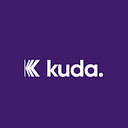This Is The Kuda Receipt
Taking a screenshot to prove that a transaction was done isn’t something you should have to do in your beautiful life, which is why we’ve made sharing receipts from Kuda simple.
With a couple of taps, you can send a receipt by chat or email, or save it on your phone as a PDF document.
We’re so confident of how convenient this is that we turned off screenshots on Kuda for Android. (Which also makes the app more secure for you.)
We daresay the Kuda Receipt is unique and unmistakable, but that’s only if you know what to look out for.
So if you’ve never used the ‘Share Receipt’ feature on Kuda or you’re just curious to know what all the fuss is about, this is the anatomy of the Kuda Receipt.
The Header

The header of the receipt is the part of it that’s above the transaction details.
On the left side of this header, there’s the full Kuda logo: the stylised ‘K’ sign, our name and a full stop.
Fun fact: The full stop means Kuda is the only bank you’ll ever need. 💪🏾
In the middle of the header, there’s the name on the Kuda account the receipt was generated from and the number of the account.
And on the right side of the header, there’s ‘Transaction Details’.
The Transaction Details

Each receipt is generated automatically for a particular transaction and right below the header, you’ll find the details of that transaction:
- The name of the beneficiary (the recipient of a payment) or the name of the sender (the source of a payment).
- The date the transaction was done.
- The amount of money involved in the transaction.
- The payment method (how the transaction was done).
- The name of the bank that received or made the payment.
- The transaction fee. (Reminder: You have 25 free transfers every month.)
- The description of the transfer, also known as a transaction note or narration.
- The session ID of the transaction — a unique code that identifies the transaction.
The Footer

The footer of the receipt is everything below the transaction details.
It includes legal information commonly called the fine print and, of more interest to you, the inkless official Kuda stamp.
The Kuda stamp confirms the authenticity of the transaction receipt — if there’s no stamp, it’s not the real deal.
To share a receipt, open Kuda, look for the particular transaction in your account history (it’s on your dashboard), tap that transaction then tap the Share button in the upper-right corner of your screen.
This is a visual guide to help you share receipts like a Kuda pro.
Please, share this post and stay safe. 💜
